Есть такое грибное место в Подмосковье, где растут даже редкие виды съедобных грибов
Недавно мы ездили в лес за грибами в Подмосковье. Встали рано утром, ещё до восхода солнца, и отправились в знакомый нам лес Московской области. Пока мы ехали, размышляли, чем сегодня нас лес удивит и порадует, какие виды грибов сейчас будут попадаться нам в лесу и в каком количестве, и будут ли они вообще, ведь не исключён и такой вариант, и тогда наша поездка окажется напрасной?
Наверное, такие вопросы задаёт себе каждый грибник, отправляясь в лес за грибами. Но как бы вы об этом ни думали, ответы на данные вопросы появятся только по прибытии на место – в намеченный лес.
И вот мы уже на месте. Этот лес мы хорошо знаем, были в нём несколько раз. Лес замечательный – грибной, т.к. каждый раз отправляясь туда за грибами, мы никогда без грибов не возвращались. Даже в самую сухую погоду, когда давно не было дождя, в этом лесу растут грибы.
Вот и сейчас, стоило только зайти в лес и углубиться подальше от дороги, на нашем пути стали попадаться грибы.
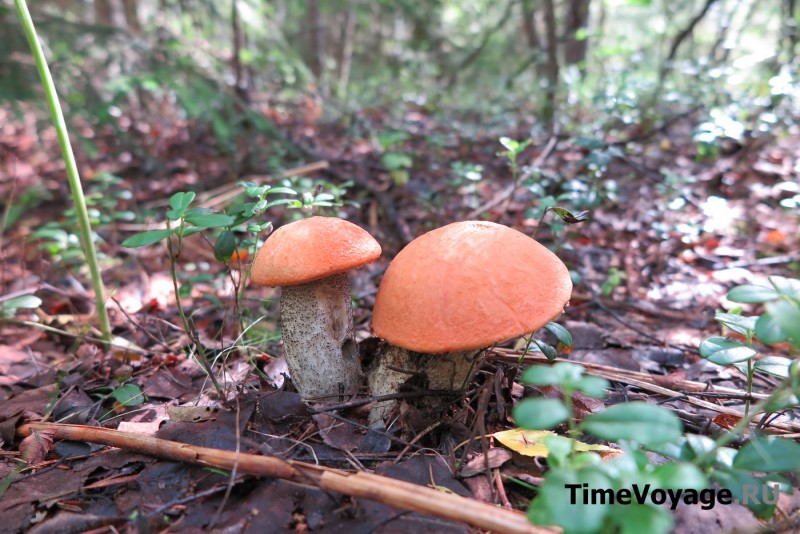 Грибов в лесу много, основная часть среди них – Подосиновики (лат. Leccinum), в народе их иногда ещё называют – Красноголовики.
Грибов в лесу много, основная часть среди них – Подосиновики (лат. Leccinum), в народе их иногда ещё называют – Красноголовики.
Мы же их при сборе, только не смейтесь, вообще называем и произносим сокращённо – "Подос" или в уменьшительно-ласкательной форме – "Подосик". Звучит смешно, но нам это словечко ближе по слуху: Идём по лесу и собираем Подосики! Особенно, когда они ещё маленькие, и только-только проклюнулись из-под почвы.
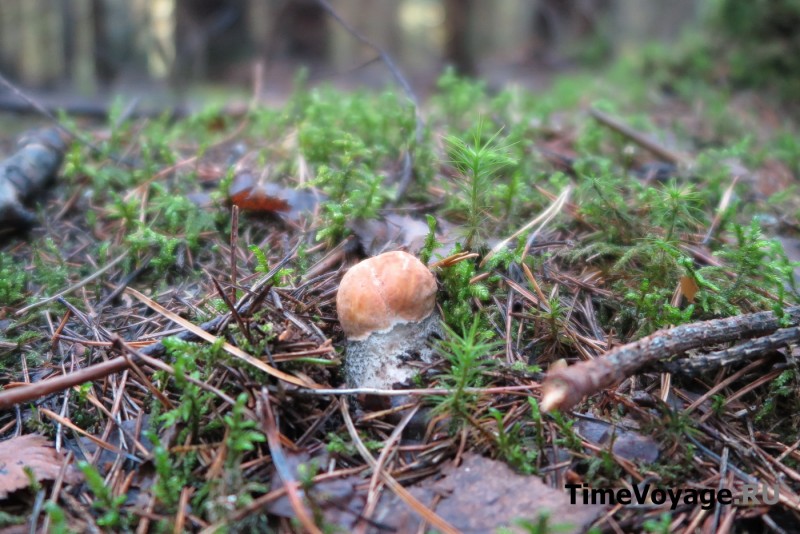 Данный лес порадовал нас тем, что грибов в нём не только много, но они ещё и растут дружно "семьями". Стоит только наткнуться на один гриб, глядишь, а возле него, как правило, ещё стоят его "собратья". На следующем фото как раз семейка из четырёх Подосиновиков.
Данный лес порадовал нас тем, что грибов в нём не только много, но они ещё и растут дружно "семьями". Стоит только наткнуться на один гриб, глядишь, а возле него, как правило, ещё стоят его "собратья". На следующем фото как раз семейка из четырёх Подосиновиков.
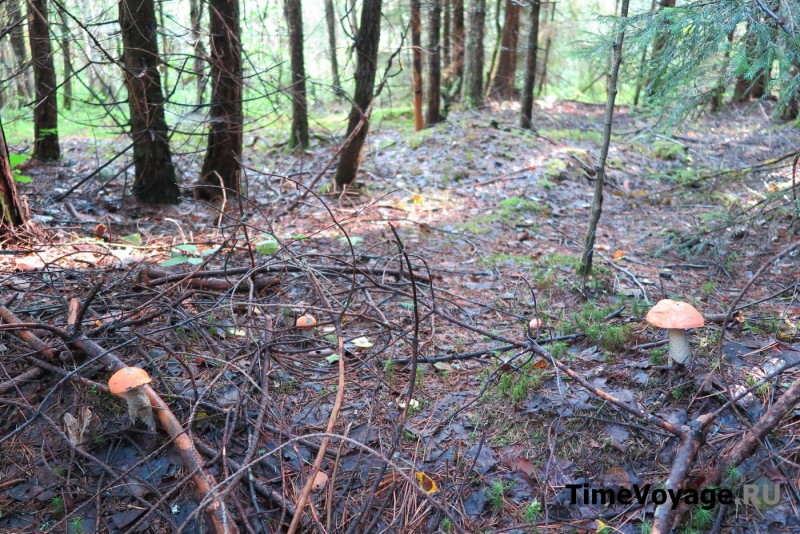 Некоторые грибочки подъедены слизнями, но это не страшно, самое главное, что не червивые. В таких случаях мы шутливо говорим: Значит вкусненький грибочек, коль слизень его покушал.
Некоторые грибочки подъедены слизнями, но это не страшно, самое главное, что не червивые. В таких случаях мы шутливо говорим: Значит вкусненький грибочек, коль слизень его покушал.
А вот эту полупрозрачную гусеницу, сползающую со шляпки гриба (см.фото ниже), мы заметили только дома, просматривая фотографии. Вот чем и интересна фотоохота. Иногда только на фотографии можно заметить то, и те мелкие детали, которые мы обычно не замечаем, по причине того, что наше внимание занято чем-то более глобальным – в частности, беглым сканированием лесной поверхности взглядом на наличие грибов.
И на такие мелкие детали у нас порой не хватает внимания. А жаль! Ведь это всё так интересно, так натурально, и такое живое в лесу. Каждая паутинка с паучком, лягушонок, пересекающий тебе путь и прыгающий с кочки на кочку, бабочка, сидящая на листочке, гусеница, ползущая по своим важным делам, и многое-многое другое. Природа!
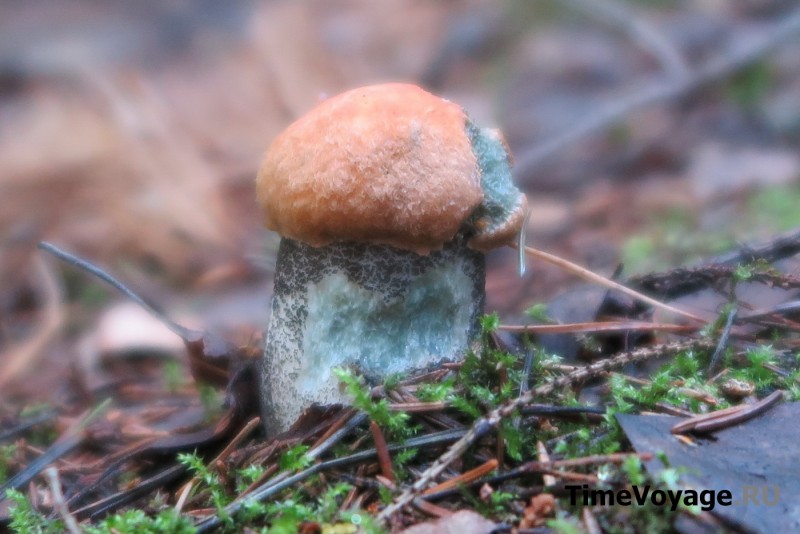 Белых грибов в лесу меньше, но и они встречаются.
Белых грибов в лесу меньше, но и они встречаются.
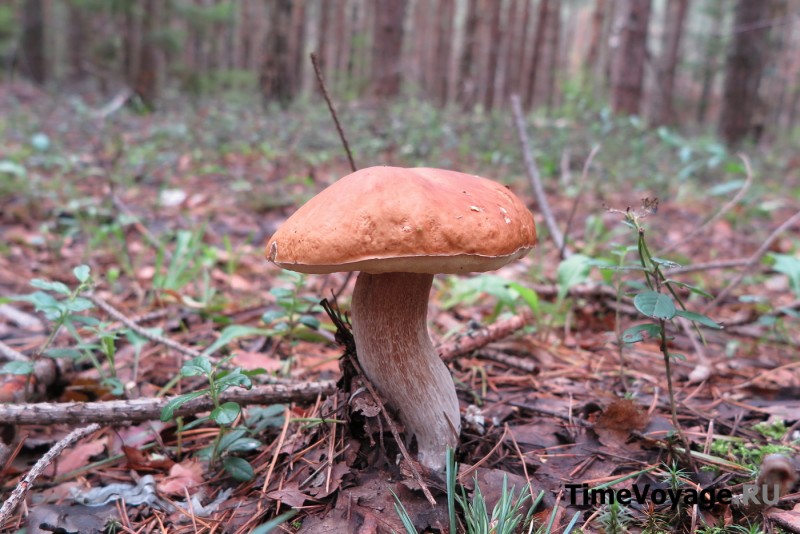 Что касается нас, то, несмотря на то, что Белые грибы считаются более благородным видом грибов, чем Подосиновики, последние нам нравятся больше, даже несмотря на их более низкий статус, т.к. чисто визуально Подосиновики выглядят намного красочнее и интереснее своим внешним видом. Какие у них интересные ножки в "крапинку"! А какие у них цветовые разнообразия шляпок, красные, жёлто-бурые, оранжевые, и даже бывают Подосиновики альбиносы - полностью белого цвета, что ножка, что шляпка!
Что касается нас, то, несмотря на то, что Белые грибы считаются более благородным видом грибов, чем Подосиновики, последние нам нравятся больше, даже несмотря на их более низкий статус, т.к. чисто визуально Подосиновики выглядят намного красочнее и интереснее своим внешним видом. Какие у них интересные ножки в "крапинку"! А какие у них цветовые разнообразия шляпок, красные, жёлто-бурые, оранжевые, и даже бывают Подосиновики альбиносы - полностью белого цвета, что ножка, что шляпка!
Да и червивыми Подосиновики, по нашей статистике, бывают гораздо реже по сравнению с Белыми грибами. Поэтому Подосиновики – это наши самые любимые грибы.
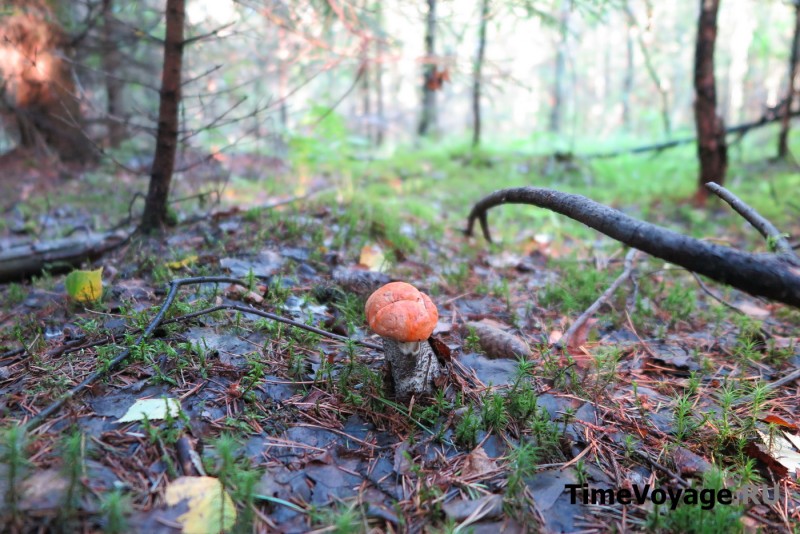 Вот эта кучка Подосиновиков была собрана буквально за несколько минут. Все они росли в небольшом удалении друг от друга. Срывая один гриб, делали несколько шагов, осматривались вокруг, и обнаруживали следующий гриб, и так далее. Получилось восемь грибов с одного небольшого участка.
Вот эта кучка Подосиновиков была собрана буквально за несколько минут. Все они росли в небольшом удалении друг от друга. Срывая один гриб, делали несколько шагов, осматривались вокруг, и обнаруживали следующий гриб, и так далее. Получилось восемь грибов с одного небольшого участка.
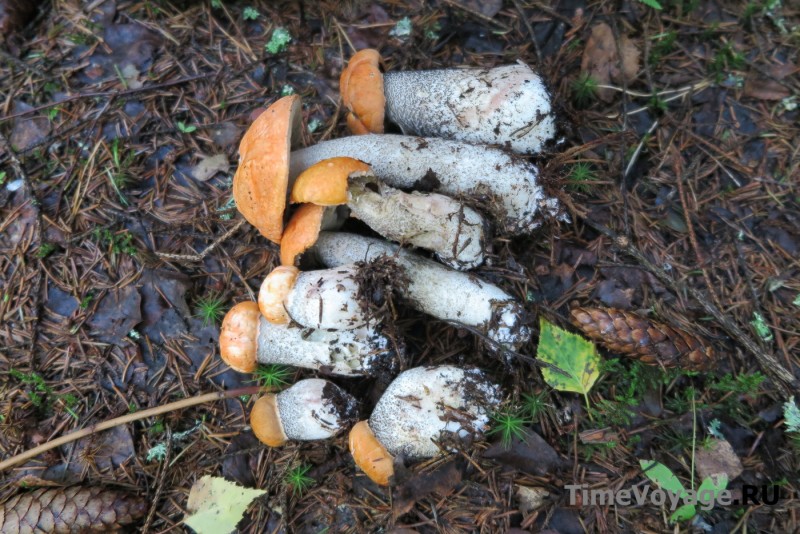 Далее, грибы не заканчивались в какую бы сторону мы не пошли. Они повсюду, Подосиновики, Подосиновики и Подосиновики…
Далее, грибы не заканчивались в какую бы сторону мы не пошли. Они повсюду, Подосиновики, Подосиновики и Подосиновики…
Что интересно, перед поездкой мы посмотрели грибные новости в соцсетях. Там многие грибники жаловались, что грибов в лесу мало, а кто-то и вовсе говорил, что их почти нет.
Но оказавшись в лесу, стало ясно, что всё то, что мы читали в соцсетях, не соответствует действительности. Грибов в Подмосковном лесу хоть завались, и некоторые из них даже перерастают до гигантских размеров. Кстати, на фото ниже, не очень хорошо виден второй гриб, а он есть, и стоит он на заднем плане, за гигантским Подосиновиком, прямо под стволом дерева - оранжевое пятнышко. Это тоже Подосиновик, но моложе своего старшего брата гиганта.
 Идём дальше, и по ходу, куда ни глянь - кругом Подосиновики разных форм и размеров. Как говорится – на любой вкус!
Идём дальше, и по ходу, куда ни глянь - кругом Подосиновики разных форм и размеров. Как говорится – на любой вкус!
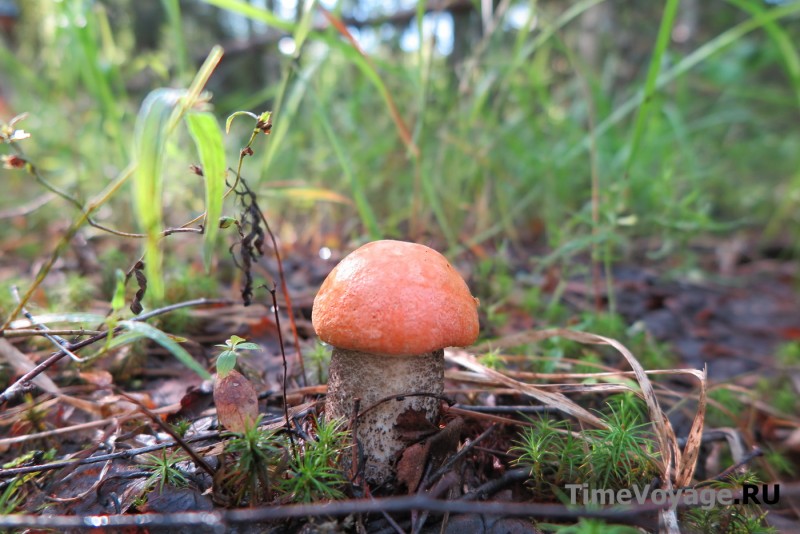
Самой интересной находкой в этот день стали грибы Рядовка Скученная (Lyophyllum decastes). Мы нашли их несколько пучков. Тут надо обязательно отметить, что у данного вида Рядовок в одном пучке (связке) может быть даже 100 и более грибов, а в некоторых случаях и до 200 штук.
Это уже тритий год подряд, как мы находим Рядовку Скученную в лесах Московской области. А до этого мы её никогда не встречали, может быть она просто не попадалась на нашем пути, а может быть её вообще нигде не было – не росла, мы не знаем с чем это связано. Но в любом случае тенденция говорит о том, что она или появилась или её стало больше.
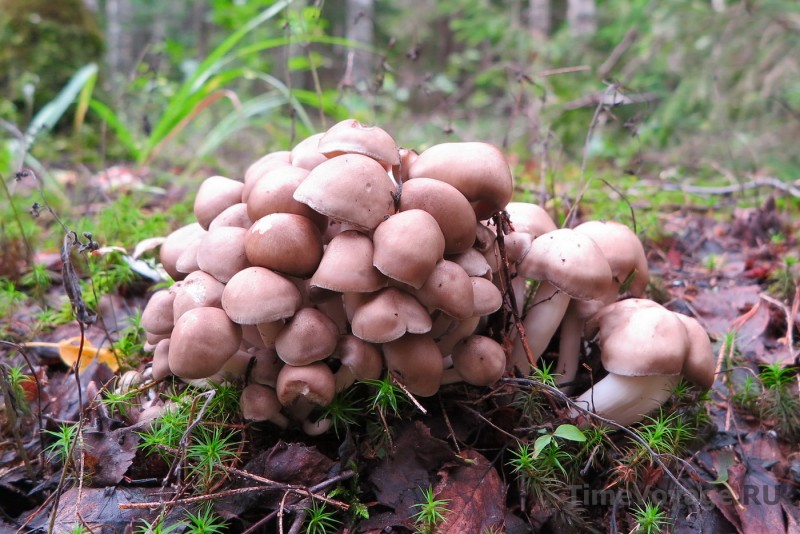 Эти грибы имеют удивительно потрясающий вид, но не по отдельности, а вместе, когда они в одной кучке (в связке) и ещё не разделены друг от друга. Именно поэтому эти грибы имеют название Рядовка Скученная. Ещё их называют Рядовка Групповая. Такие грибные кучки заметны издалека, и собирать их одно удовольствие.
Эти грибы имеют удивительно потрясающий вид, но не по отдельности, а вместе, когда они в одной кучке (в связке) и ещё не разделены друг от друга. Именно поэтому эти грибы имеют название Рядовка Скученная. Ещё их называют Рядовка Групповая. Такие грибные кучки заметны издалека, и собирать их одно удовольствие.
Рядовка Скученная лучше всего смотрится пока она молодая, с маленькими закруглёнными шляпками, которые в кучке выглядят, как грибной букетик, или, как лесной коралл.
Да и собирать их удобно, вытащил пучок, положил в корзинку, и она уже, считай, на треть полная. Дивные съедобные грибочки!
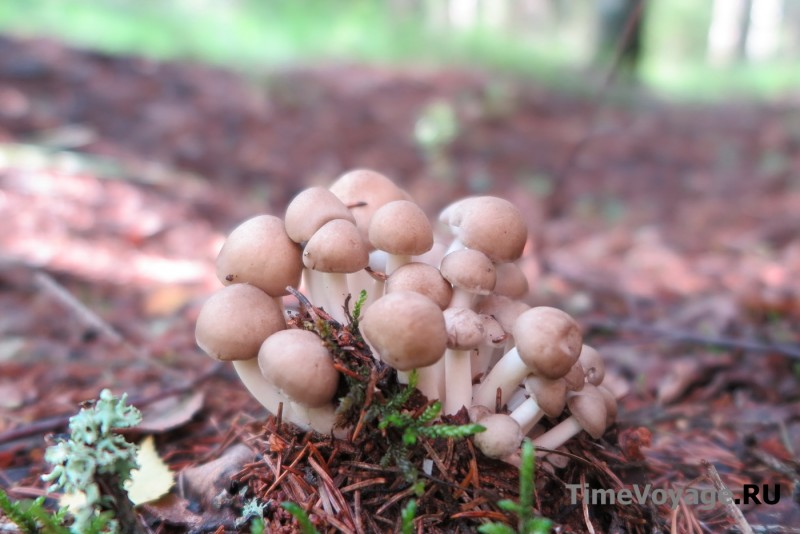 В этой статье нет возможности показать фотографии всех собранных грибов по отдельности, потому что их очень много.
В этой статье нет возможности показать фотографии всех собранных грибов по отдельности, потому что их очень много.
Поэтому все остальные грибы, которые мы нашли в этот день, а это почти две корзины, и сам процесс сбора нами грибов в этом лесу, с грибными полянами на которых растут сразу по несколько Подосиновиков, вы можете посмотреть в нашем видео, ниже.
Всем, удачной грибной охоты!
Наверное, такие вопросы задаёт себе каждый грибник, отправляясь в лес за грибами. Но как бы вы об этом ни думали, ответы на данные вопросы появятся только по прибытии на место – в намеченный лес.
И вот мы уже на месте. Этот лес мы хорошо знаем, были в нём несколько раз. Лес замечательный – грибной, т.к. каждый раз отправляясь туда за грибами, мы никогда без грибов не возвращались. Даже в самую сухую погоду, когда давно не было дождя, в этом лесу растут грибы.
Вот и сейчас, стоило только зайти в лес и углубиться подальше от дороги, на нашем пути стали попадаться грибы.
 Грибов в лесу много, основная часть среди них – Подосиновики (лат. Leccinum), в народе их иногда ещё называют – Красноголовики.
Грибов в лесу много, основная часть среди них – Подосиновики (лат. Leccinum), в народе их иногда ещё называют – Красноголовики.Мы же их при сборе, только не смейтесь, вообще называем и произносим сокращённо – "Подос" или в уменьшительно-ласкательной форме – "Подосик". Звучит смешно, но нам это словечко ближе по слуху: Идём по лесу и собираем Подосики! Особенно, когда они ещё маленькие, и только-только проклюнулись из-под почвы.
 Данный лес порадовал нас тем, что грибов в нём не только много, но они ещё и растут дружно "семьями". Стоит только наткнуться на один гриб, глядишь, а возле него, как правило, ещё стоят его "собратья". На следующем фото как раз семейка из четырёх Подосиновиков.
Данный лес порадовал нас тем, что грибов в нём не только много, но они ещё и растут дружно "семьями". Стоит только наткнуться на один гриб, глядишь, а возле него, как правило, ещё стоят его "собратья". На следующем фото как раз семейка из четырёх Подосиновиков. Некоторые грибочки подъедены слизнями, но это не страшно, самое главное, что не червивые. В таких случаях мы шутливо говорим: Значит вкусненький грибочек, коль слизень его покушал.
Некоторые грибочки подъедены слизнями, но это не страшно, самое главное, что не червивые. В таких случаях мы шутливо говорим: Значит вкусненький грибочек, коль слизень его покушал.А вот эту полупрозрачную гусеницу, сползающую со шляпки гриба (см.фото ниже), мы заметили только дома, просматривая фотографии. Вот чем и интересна фотоохота. Иногда только на фотографии можно заметить то, и те мелкие детали, которые мы обычно не замечаем, по причине того, что наше внимание занято чем-то более глобальным – в частности, беглым сканированием лесной поверхности взглядом на наличие грибов.
И на такие мелкие детали у нас порой не хватает внимания. А жаль! Ведь это всё так интересно, так натурально, и такое живое в лесу. Каждая паутинка с паучком, лягушонок, пересекающий тебе путь и прыгающий с кочки на кочку, бабочка, сидящая на листочке, гусеница, ползущая по своим важным делам, и многое-многое другое. Природа!
 Белых грибов в лесу меньше, но и они встречаются.
Белых грибов в лесу меньше, но и они встречаются. Что касается нас, то, несмотря на то, что Белые грибы считаются более благородным видом грибов, чем Подосиновики, последние нам нравятся больше, даже несмотря на их более низкий статус, т.к. чисто визуально Подосиновики выглядят намного красочнее и интереснее своим внешним видом. Какие у них интересные ножки в "крапинку"! А какие у них цветовые разнообразия шляпок, красные, жёлто-бурые, оранжевые, и даже бывают Подосиновики альбиносы - полностью белого цвета, что ножка, что шляпка!
Что касается нас, то, несмотря на то, что Белые грибы считаются более благородным видом грибов, чем Подосиновики, последние нам нравятся больше, даже несмотря на их более низкий статус, т.к. чисто визуально Подосиновики выглядят намного красочнее и интереснее своим внешним видом. Какие у них интересные ножки в "крапинку"! А какие у них цветовые разнообразия шляпок, красные, жёлто-бурые, оранжевые, и даже бывают Подосиновики альбиносы - полностью белого цвета, что ножка, что шляпка!Да и червивыми Подосиновики, по нашей статистике, бывают гораздо реже по сравнению с Белыми грибами. Поэтому Подосиновики – это наши самые любимые грибы.
 Вот эта кучка Подосиновиков была собрана буквально за несколько минут. Все они росли в небольшом удалении друг от друга. Срывая один гриб, делали несколько шагов, осматривались вокруг, и обнаруживали следующий гриб, и так далее. Получилось восемь грибов с одного небольшого участка.
Вот эта кучка Подосиновиков была собрана буквально за несколько минут. Все они росли в небольшом удалении друг от друга. Срывая один гриб, делали несколько шагов, осматривались вокруг, и обнаруживали следующий гриб, и так далее. Получилось восемь грибов с одного небольшого участка. Далее, грибы не заканчивались в какую бы сторону мы не пошли. Они повсюду, Подосиновики, Подосиновики и Подосиновики…
Далее, грибы не заканчивались в какую бы сторону мы не пошли. Они повсюду, Подосиновики, Подосиновики и Подосиновики…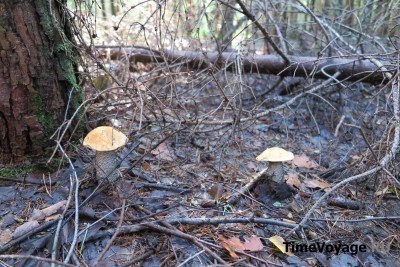 | 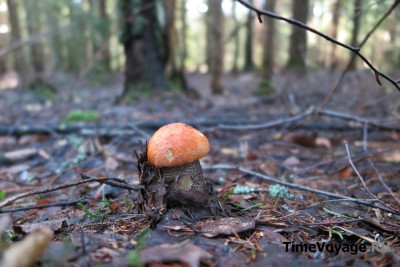 |
Но оказавшись в лесу, стало ясно, что всё то, что мы читали в соцсетях, не соответствует действительности. Грибов в Подмосковном лесу хоть завались, и некоторые из них даже перерастают до гигантских размеров. Кстати, на фото ниже, не очень хорошо виден второй гриб, а он есть, и стоит он на заднем плане, за гигантским Подосиновиком, прямо под стволом дерева - оранжевое пятнышко. Это тоже Подосиновик, но моложе своего старшего брата гиганта.
 Идём дальше, и по ходу, куда ни глянь - кругом Подосиновики разных форм и размеров. Как говорится – на любой вкус!
Идём дальше, и по ходу, куда ни глянь - кругом Подосиновики разных форм и размеров. Как говорится – на любой вкус!
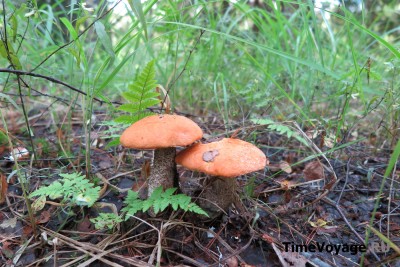 | 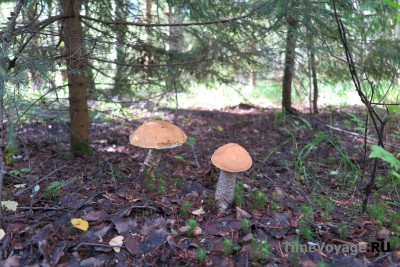 |
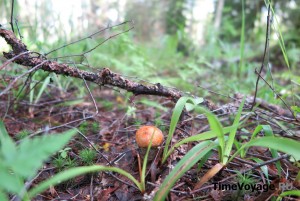 | 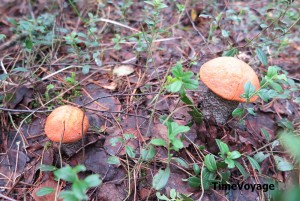 | 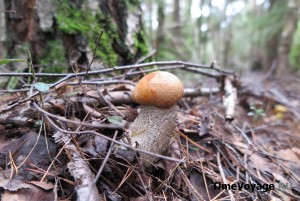 |
Это уже тритий год подряд, как мы находим Рядовку Скученную в лесах Московской области. А до этого мы её никогда не встречали, может быть она просто не попадалась на нашем пути, а может быть её вообще нигде не было – не росла, мы не знаем с чем это связано. Но в любом случае тенденция говорит о том, что она или появилась или её стало больше.
 Эти грибы имеют удивительно потрясающий вид, но не по отдельности, а вместе, когда они в одной кучке (в связке) и ещё не разделены друг от друга. Именно поэтому эти грибы имеют название Рядовка Скученная. Ещё их называют Рядовка Групповая. Такие грибные кучки заметны издалека, и собирать их одно удовольствие.
Эти грибы имеют удивительно потрясающий вид, но не по отдельности, а вместе, когда они в одной кучке (в связке) и ещё не разделены друг от друга. Именно поэтому эти грибы имеют название Рядовка Скученная. Ещё их называют Рядовка Групповая. Такие грибные кучки заметны издалека, и собирать их одно удовольствие.Рядовка Скученная лучше всего смотрится пока она молодая, с маленькими закруглёнными шляпками, которые в кучке выглядят, как грибной букетик, или, как лесной коралл.
Да и собирать их удобно, вытащил пучок, положил в корзинку, и она уже, считай, на треть полная. Дивные съедобные грибочки!
 В этой статье нет возможности показать фотографии всех собранных грибов по отдельности, потому что их очень много.
В этой статье нет возможности показать фотографии всех собранных грибов по отдельности, потому что их очень много.Поэтому все остальные грибы, которые мы нашли в этот день, а это почти две корзины, и сам процесс сбора нами грибов в этом лесу, с грибными полянами на которых растут сразу по несколько Подосиновиков, вы можете посмотреть в нашем видео, ниже.
ВИДЕО: Собираем грибы
Итог
Поездка в лес оказалась удачной. В лесу оказалось очень много грибов, особенно Подосиновиков. Мы хорошо погуляли, надышались свежим лесным воздухом, и домой вернулись с непустыми корзинами.Всем, удачной грибной охоты!
